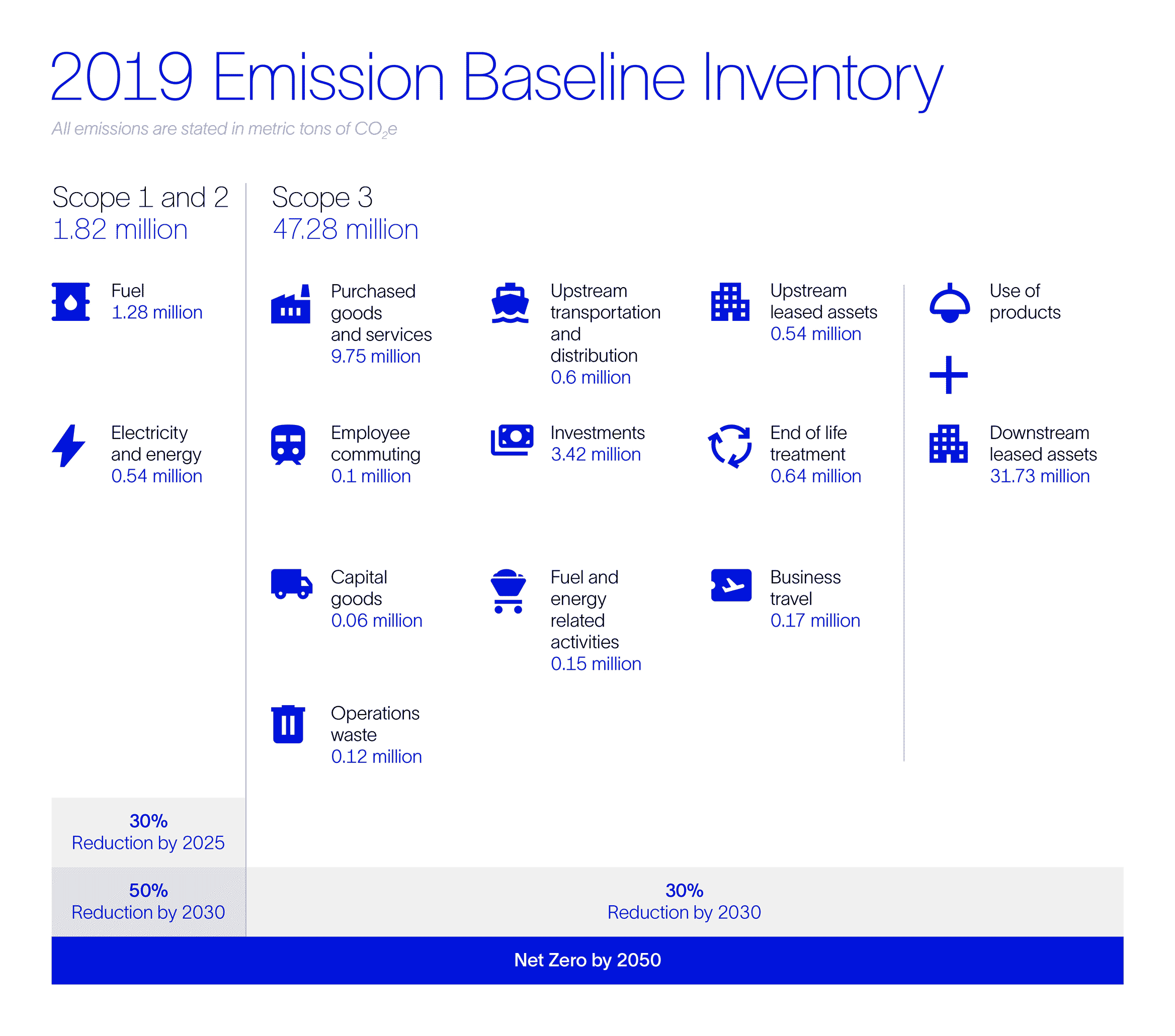Our journey to lower emissions
Reducing our emissions and energy usage across our value chain

Challenge
SLB is committed to achieving net-zero greenhouse gas (GHG) emissions by 2050— aligned with science-based methodology and the 1.5 degC target of the Paris Agreement. We have established a timeline with interim targets, using 2019 as our baseline.
30%
reduction in Scope 1 and 2 emissions by 2025 and reduction in Scope 3 emissions by 2030
50%
reduction in Scope 1 and 2 emissions by 2030


We have developed road maps for Scope 1, 2, and 3 emissions, extending to 2030. Our key operational strategies include:
- Implementing geography-specific Scope 1 and 2 decarbonization road maps
- Creating a fuel playbook to outline practical actions by job function to record, reduce, and replace operational fuel usage, which is the largest source of our Scope 1 and 2 emissions
- Enhancing data accuracy, operational efficiency, and job design to reduce or eliminate emissions.
Switching to Solar in Saudi Arabia
Our team in Saudi Arabia has installed 1450 solar panels—eliminating 600 metric tons of CO2e annually and covering the entire electricity consumption of the facility administration building.
Sustainability
Reducing GHG emissions in field operations
In 2022, our geography net zero roadmaps highlighted the importance of taking action on key sources of fuel use in our field operations. Our strategy is to focus on operational efficiency, electrification, job design for fuel-intensive services, and low-carbon fuel alternatives. Reducing and consolidating trips, engine idling campaigns and planning and logistics are key actions taken to improve operational efficiency. Electrification opportunities for light vehicles and equipment have been assessed in 2022 and action plans prioritized based on impact, availability, and infrastructure. Job design for higher emission services such as stimulation can play an important role in the overall emissions released during the job.

